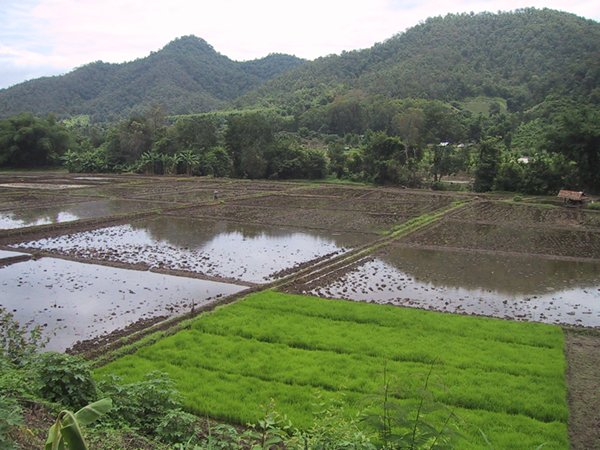This is a blog from the field, from a lowland northern Thai village. The rice growing season is getting under way. The seedling beds have been planted; the fields have been ploughed and the bunds dividing the fields have been repaired. Over the next few days teams of exchange labourers will start to descend on the fields to uproot the seedlings, bundle them up, trim them and then plant them into the flooded fields.
The most popular variety of rice is Sanpatong 1, a high yielding modern variety that responds well to fertiliser (usually three applications over the growing season). Commentators on rural life in Asia are often critical of the “green revolution” but for farmers here, Sanpatong 1 means food security. Farmers recall times past when rice shortages were common (especially for those with large families) and when going to bed hungry was not a rare occurrence. Local varieties of rice were tasty but yields were often low. In the “good old days” if you ran out of rice you had to try to buy or borrow. Buying was hard, as those with rice were reluctant to sell. Sometimes you could walk across the high mountain ridge into a neighbouring valley where the paddy fields were more extensive and where some farmers had a surplus to sell. But if you couldn’t buy you had to borrow rice from neighbours or relatives within the village. If you borrowed one thang (about 10 kilograms) you paid back three thang. Simple as that. So, if you were lucky enough to have a good surplus, the profits from others’ misfortune could be very lucrative indeed.
 Facebook
Facebook  Twitter
Twitter  Soundcloud
Soundcloud  Youtube
Youtube  Rss
Rss 